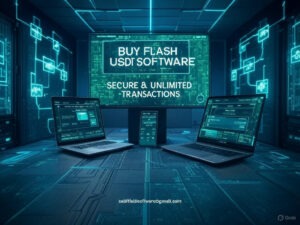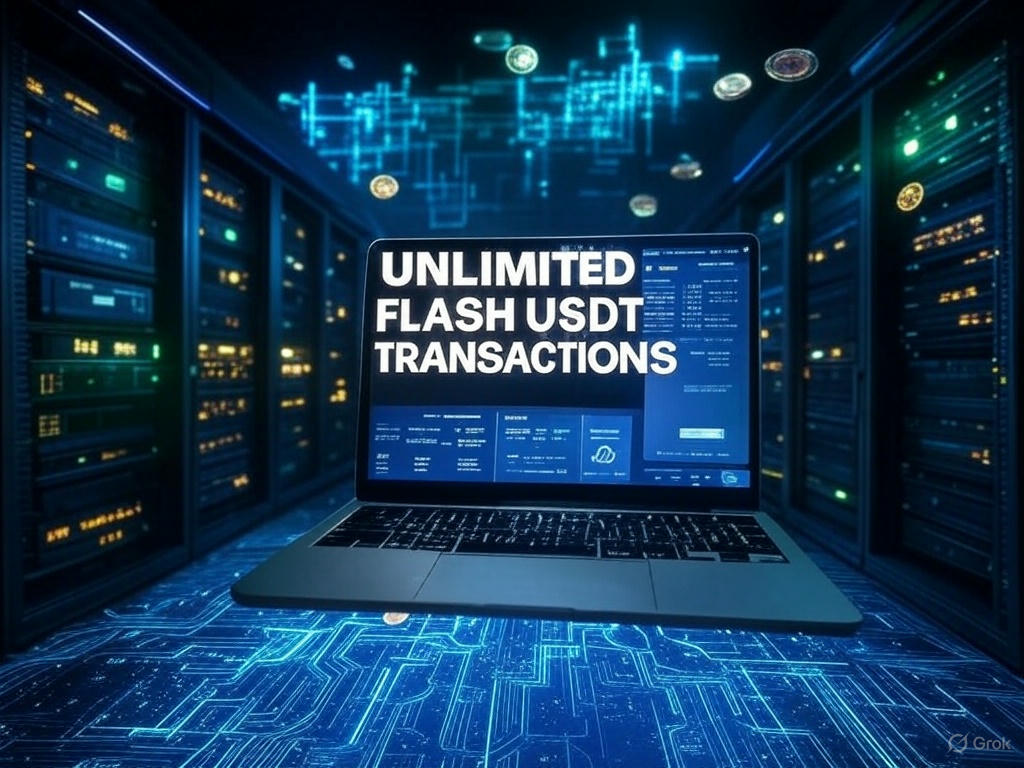Breaking Down How to Create Flash USDT: A Complete Analysis
Table of Contents
- Introduction to USDT Flash Technology
- Understanding the Fundamentals of Flash USDT
- Step-by-Step Process to Create Flash USDT
- Technical Requirements for USDT Flashing
- Software Options and Licensing
- Security Considerations and Best Practices
- Use Cases and Applications
- Limitations and Legal Considerations
- Troubleshooting Common Issues
- Future of Flash USDT Technology
- Conclusion
Introduction to USDT Flash Technology
USDT Flash technology represents a significant advancement in cryptocurrency transaction methods, offering enhanced speed, flexibility, and security for Tether (USDT) transfers. This specialized software allows users to execute high-volume USDT transactions with longer validity periods than traditional methods, with transactions lasting up to 300 days. The technology has gained traction among traders, businesses, and crypto enthusiasts seeking more efficient ways to manage digital assets.
The Flash USDT ecosystem provides capabilities that extend beyond standard blockchain transactions, including the ability to split large transfers into smaller amounts, execute transfers across multiple platforms, and maintain high transaction limits of up to $50 million daily. This technological innovation addresses many limitations of conventional cryptocurrency transactions, particularly for those requiring rapid, high-volume transfers.
Understanding the Fundamentals of Flash USDT
Before diving into the creation process, it’s essential to understand what Flash USDT actually is. Unlike standard USDT transactions that are permanently recorded on the blockchain immediately, Flash USDT utilizes specialized protocols that create transactions with extended verification timeframes. This approach provides several advantages:
- Transactions remain active and valid for up to 300 days
- Ability to split large amounts into smaller transactions
- Compatibility with P2P platforms and decentralized exchanges
- Global functionality without regional restrictions
- Integration with major cryptocurrency wallets and exchanges
The technology operates across multiple networks, including TRON and Ethereum, making it versatile for various use cases. The fundamental principle involves creating transaction signatures that maintain validity for extended periods, allowing recipients to verify the authenticity of funds while providing the sender with flexible transfer options.
Step-by-Step Process to Create Flash USDT
Creating Flash USDT requires specialized software and technical knowledge. Here’s a comprehensive breakdown of the process:
1. Acquiring the Necessary Software
The first step is obtaining reliable USDT Flash Software. There are several licensing options available:
- Demo Version ($15): Allows a one-time flash of up to $50
- 2-Year License ($3,000): Enables flashing up to $20 million daily
- Lifetime License ($5,000): Provides capability to flash up to $50 million daily
2. Installation and Setup
Once you’ve acquired the software, follow these steps:
- Download the software from the official source
- Install on your preferred device (compatible with PC, Mac, iOS, and Android)
- Complete the verification process to activate your license
- Configure security settings according to your requirements
3. Connecting to Your Wallet
The Flash USDT software requires connection to your cryptocurrency wallet:
- Integrate with major wallet providers (MetaMask, Trust Wallet, etc.)
- Verify wallet connection through authentication protocols
- Ensure sufficient regular USDT is available for the flashing process
4. Creating the Flash Transaction
With everything set up, you can now create Flash USDT:
- Specify the amount you wish to flash (within your license limits)
- Select the network (TRON, Ethereum, etc.)
- Input the recipient’s wallet address
- Configure transaction parameters including duration and splitting options
- Execute the flash process through the software interface
Technical Requirements for USDT Flashing
To successfully create Flash USDT, certain technical requirements must be met:
- Stable internet connection with sufficient bandwidth for secure transactions
- Updated operating system with current security patches
- Compatible device meeting minimum hardware specifications
- Access to cryptocurrency wallets supporting USDT on multiple networks
- Basic knowledge of blockchain transactions and security practices
The system requirements are generally accessible to most users, though professional users handling larger volumes may need more robust setups to ensure transaction stability and security.
Software Options and Licensing
When considering how to create Flash USDT, selecting the right software package is crucial. The licensing options provide different capabilities:
Demo Version ($15)
This entry-level option allows users to test the functionality with limited capabilities:
- One-time flash of up to $50
- Support for multiple cryptocurrencies including USDT, BTC, ETH, TRX, XRP, BCH
- Access to basic customer support and updates
- Useful for understanding the process before committing to higher-tier licenses
2-Year License ($3,000)
This mid-tier option provides significant capabilities for serious users:
- Daily flash limit of up to $20 million
- Transactions valid for up to 300 days
- Full technical support and regular updates
- Compatible with all major wallets and exchanges
Lifetime License ($5,000)
The premium option for professional users and institutions:
- Maximum daily flash limit of $50 million
- Unlimited transfers and lifetime updates
- Priority customer support
- Advanced security features and global compatibility
Security Considerations and Best Practices
Creating and managing Flash USDT requires strong security measures:
- Use hardware wallets when possible for storing underlying assets
- Enable two-factor authentication for all accounts
- Keep software updated to the latest version
- Verify recipient addresses through multiple channels
- Maintain transaction logs for reference and troubleshooting
- Use VPN services for additional protection during transactions
- Implement transaction limits appropriate to your needs
Following these security protocols is essential to protect your assets and ensure transaction integrity, especially when dealing with high-value transfers.
Use Cases and Applications

Flash USDT technology serves numerous practical applications across different sectors:
For Traders
Professional traders benefit from:
- Executing high-volume transactions efficiently
- Quickly moving funds between exchanges to capitalize on arbitrage opportunities
- Managing liquidity across multiple platforms
For Businesses
Companies can leverage Flash USDT for:
- Processing large payments with extended verification periods
- Managing international transfers without traditional banking delays
- Providing customers with flexible payment options
For Financial Services
Institutions find value in:
- Simplifying cross-border banking transactions
- Reducing settlement times for large transfers
- Creating more efficient treasury management systems
Limitations and Legal Considerations
While Flash USDT offers significant advantages, users should be aware of important limitations and legal factors:
- Regulatory compliance varies by jurisdiction and may impact usability
- The technology operates in a legal gray area in some regions
- Transaction reversibility may be limited compared to traditional banking
- Users must perform due diligence regarding tax implications
- Some exchanges may have policies against accepting flash transactions
It’s essential to consult with legal and financial advisors before implementing Flash USDT for significant transactions or business operations to ensure compliance with relevant regulations.
Troubleshooting Common Issues
Users may encounter certain challenges when creating Flash USDT:
- Transaction verification failures: Often resolved by checking network congestion and trying again
- Wallet compatibility issues: Requires updating wallet software or switching to compatible alternatives
- Transfer limits not working as expected: May require license verification or software updates
- Security alerts from exchanges: Some platforms may flag flash transactions requiring additional verification
Most issues can be resolved through the 24/7 support services provided with licensed software, highlighting the importance of purchasing through official channels.
Future of Flash USDT Technology
The Flash USDT landscape continues to evolve with several emerging trends:
- Integration with DeFi protocols to expand functionality
- Enhanced security measures to address evolving threats
- Improved cross-chain compatibility for broader application
- Regulatory adaptations as the legal framework develops
- Increased adoption by institutional players
As blockchain technology advances, we can expect Flash USDT capabilities to expand further, potentially offering even longer transaction validity periods and higher transfer limits while maintaining security and reliability.
Conclusion
Creating Flash USDT represents a powerful solution for individuals and organizations seeking enhanced flexibility and efficiency in cryptocurrency transactions. With the ability to process large transfers, split transactions, and maintain extended validation periods, this technology addresses many limitations of traditional blockchain transfers.
While implementing Flash USDT requires specialized software and technical knowledge, the benefits can be substantial for the right use cases. As with any advanced financial technology, users should approach with appropriate security measures and legal considerations in mind. For those willing to invest in the proper tools and knowledge, Flash USDT offers a compelling advancement in cryptocurrency transaction capabilities.
